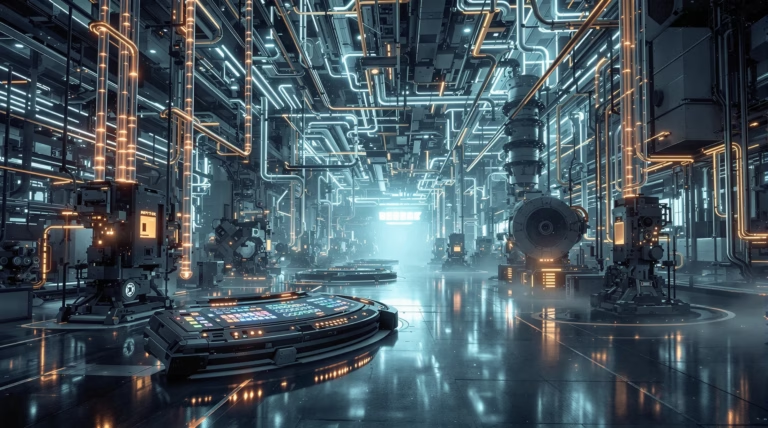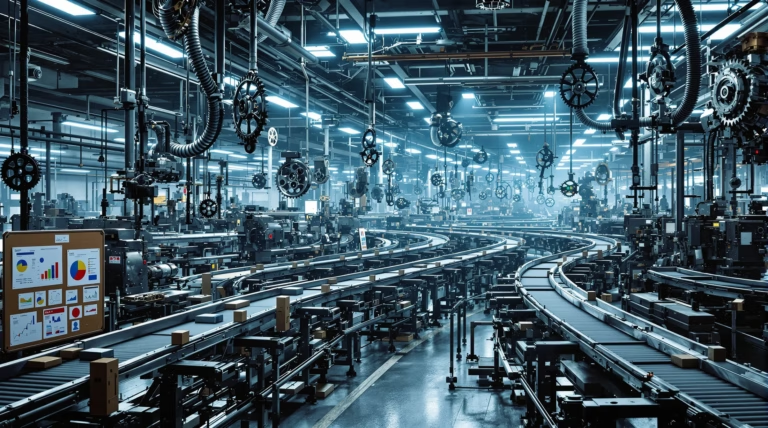Manufacturing Resource Planning: Essential Guide to MRP II
Manufacturing Resource Planning (MRP II) has revolutionized production management by integrating all aspects of manufacturing operations into a single, cohesive system. This comprehensive guide explores how MRP II optimizes production efficiency, reduces costs, and drives business growth through intelligent resource allocation.
Understanding Manufacturing Resource Planning (MRP II)
Manufacturing Resource Planning (MRP II) emerged around 1980 as a comprehensive production management system that coordinates all manufacturing resources. Unlike its predecessor, which focused solely on materials and inventory, MRP II creates an integrated environment that synchronizes multiple operational elements.
The system coordinates:
- Production scheduling and workflow
- Inventory control mechanisms
- Capacity planning operations
- Financial management systems
- Human resource allocation
The Evolution from MRP to MRP II
The transition from MRP to MRP II represents a fundamental shift in manufacturing management. While the original MRP systems of the 1960s concentrated on inventory control and basic production scheduling, MRP II emerged as a more sophisticated solution for complex manufacturing environments.
| Feature | MRP | MRP II |
|---|---|---|
| Focus | Inventory and materials | Complete business integration |
| Scope | Production scheduling | All business operations |
| Financial Integration | Limited | Comprehensive |
| Feedback System | One-way | Closed-loop |
Key Components of MRP II
An effective MRP II system integrates several crucial modules that work together to optimize manufacturing operations. The system builds upon a foundation of demand forecasting and master production scheduling.
- Demand forecasting and production scheduling
- Material requirements planning
- Capacity requirements planning
- Shop floor control systems
- Purchasing management
- Inventory management
- Financial integration
Benefits of Implementing MRP II
Implementation of MRP II delivers significant measurable benefits across the organization:
- 20-35% reduction in inventory levels
- 10-15% increase in productivity
- Up to 80% reduction in stockouts
- Improved customer satisfaction through reliable delivery dates
- Enhanced cost visibility and control
- Better cross-functional collaboration
- More agile response to market changes
How MRP II Integrates with Other Systems
MRP II functions as a central component in modern manufacturing technology ecosystems. Its integration capabilities enable seamless data flow between various business functions, creating a unified operational framework. This interconnectivity transforms MRP II from a standalone manufacturing tool into a critical element of an organization’s digital infrastructure, enabling real-time decision-making based on synchronized information across all departments.
MRP II and ERP: A Seamless Connection
The relationship between MRP II and Enterprise Resource Planning (ERP) systems represents a pivotal integration in manufacturing technology. MRP II established the foundation for modern ERP systems, with its manufacturing-focused capabilities now typically existing as a module within comprehensive ERP suites. This integration creates natural pathways for manufacturing data to flow seamlessly into other business processes.
The integration of MRP II within an ERP framework delivers substantial operational advantages:
- Automatic flow of production data into accounting systems
- Direct connection between procurement requirements and purchasing workflows
- Synchronized production schedules with sales forecasts
- Real-time inventory projections across departments
- Integrated resource allocation management
- Unified financial forecasting capabilities
Enhancing Supply Chain with MRP II
MRP II transforms supply chain management by creating robust connections between manufacturing operations and external supply networks. This integration extends planning capabilities beyond factory walls, enabling comprehensive coordination with suppliers and distribution channels throughout the value stream.
| Supply Chain Area | MRP II Integration Benefits |
|---|---|
| Inventory Management | Just-in-time material delivery, reduced warehouse costs |
| Vendor Relations | Automated purchase requisitions, collaborative forecasting |
| Production Planning | Synchronized supplier schedules, demand-driven ordering |
| Risk Management | Early disruption detection, enhanced supply chain resilience |
Implementing MRP II in Your Organization
Implementing Manufacturing Resource Planning (MRP II) marks a strategic transformation that extends beyond software installation. The process demands a comprehensive overhaul of operational procedures and often requires a cultural shift within the organization. Successful deployments typically span 12-18 months, requiring dedicated cross-functional teams and strong executive support.
Steps to Successful MRP II Implementation
- Conduct comprehensive analysis of current production processes
- Establish baseline metrics across departments
- Develop detailed implementation roadmap with realistic timelines
- Cleanse and validate master data (BOMs, routings, inventory records)
- Perform extensive user acceptance testing
- Create continuous improvement framework
- Implement regular system audits and performance reviews
Overcoming Common Challenges in MRP II
Successful MRP II implementation requires addressing several critical challenges. Change resistance often emerges as the primary obstacle, particularly in established manufacturing environments. Organizations can overcome this through structured change management approaches, including comprehensive training programs and designated system champions within each department.
- Technical integration with legacy systems
- Data migration complexities
- Customization requirements management
- User adoption and training needs
- Timeline and expectation management
- System compatibility assessment
- Performance monitoring and optimization
Future Trends in Manufacturing Resource Planning
Manufacturing Resource Planning (MRP II) continues to evolve in response to shifting industrial landscapes and technological advancements. As manufacturing environments become increasingly digitized, MRP II systems are incorporating advanced capabilities beyond traditional planning functions, including real-time analytics, predictive modeling, and autonomous decision-making processes.
Cloud-based MRP II solutions are revolutionizing resource planning by offering:
- Enhanced scalability across global manufacturing networks
- Improved accessibility for distributed teams
- Seamless integration with existing systems
- Flexible adaptation to market fluctuations
- Rapid response to supply chain disruptions
The Industrial Internet of Things (IIoT) integration enables MRP II systems to capture and utilize operational data, leading to 35% improved efficiency compared to traditional methods.
The Role of AI and Machine Learning in MRP II
| AI Capability | Performance Impact |
|---|---|
| Predictive Analytics | Early bottleneck detection and prevention |
| Machine Learning Algorithms | 20-30% improvement in forecast accuracy |
| Natural Language Processing | Simplified system interaction through voice commands |
| Pattern Recognition | Automated production parameter optimization |
Sustainability and MRP II
Modern MRP II platforms now integrate environmental considerations into resource planning calculations, enabling manufacturers to optimize operations for both efficiency and sustainability. These advanced systems track environmental metrics alongside traditional performance indicators.
- Energy cost reductions of 15-20% through optimized resource planning
- Materials savings up to 12% through improved allocation
- Automated environmental compliance reporting
- Implementation of circular economy principles
- Integrated carbon footprint monitoring
- Enhanced waste reduction tracking
The integration of sustainability metrics creates a new paradigm where economic performance and environmental stewardship are simultaneously optimized through intelligent planning systems, representing the future direction of manufacturing resource planning.







